Sous Vide Basics for Steak and Eggs

Sous vide is a method of cooking that has gained rapidly in popularity with home cooks in the last five or so years. If you’re not familiar, sous vide is a cooking technique by which food is gently cooked, often sealed in plastic bags by one means or another, often cooked at relatively low temperatures, in a very precisely temperature controlled water bath*.
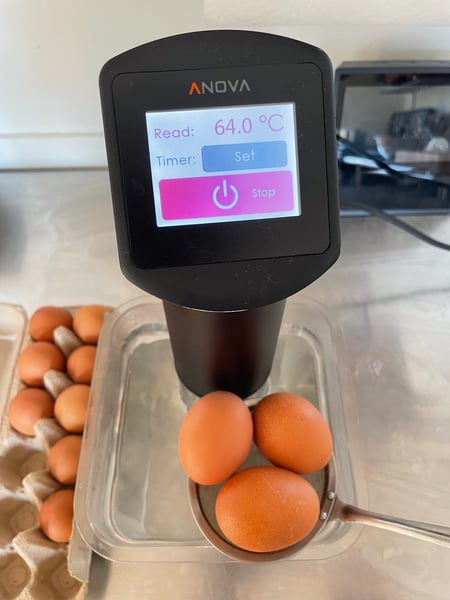 This precise temperature control means the cook has the ability to easily zero in on and consistently repeat what they would consider “perfect” doneness in any multitude of ingredients. The example that comes to mind for many people familiar with sous vide is probably steak. Cooking sous vide grants the cook the ability to cook a steak to a perfect medium rare, that, when sliced open reveals a rosy hue running completely through the interior from edge to edge. This would be a difficult feat to achieve by hand, and requires the full attention of an experienced cook. But an immersion circulator (the name of the device that actually circulated and heats the water bath) makes it a basically completely automated task.
This precise temperature control means the cook has the ability to easily zero in on and consistently repeat what they would consider “perfect” doneness in any multitude of ingredients. The example that comes to mind for many people familiar with sous vide is probably steak. Cooking sous vide grants the cook the ability to cook a steak to a perfect medium rare, that, when sliced open reveals a rosy hue running completely through the interior from edge to edge. This would be a difficult feat to achieve by hand, and requires the full attention of an experienced cook. But an immersion circulator (the name of the device that actually circulated and heats the water bath) makes it a basically completely automated task.
While impressive, this method of cooking does sacrifice a lot when it comes to building a delicious crispy crust on the outside of the steak. For this reason, I usually opt for more traditional methods when cooking my steaks. There is, however one area of steak cooking where sous vide truly reigns supreme, and that’s re-heating leftovers. When I pitched the idea for this post to my wife she said “I don’t think normal people usually have leftover steak.” Maybe, but I think she’s wrong; otherwise how would steak and eggs for breakfast ever been invented? Speaking of steak and eggs, I figured as long as I’m getting out the circulator I may as well make a sous vide egg to serve along with my re-heated steak.
The eggs cook at a higher temperature so I set the circulator to their temperature first. There’s a texture when it comes to cooked eggs that you can only achieve with very precise temperature control. This is a just barely set white, with a yolk that has the texture of a stiff caramel or just warm fudge. An immersion circulator is actually one of the best ways to achieve this because of its ability to control the temperature of the water bath to within 0.1 ºF allows for the perfect cooking medium, and the shell of the egg means you don’t need to bag it. This makes it one of the most beginner-friendly sous vide tricks.
The plan will be to start by cooking the eggs from fridge temp for one hour at 147.2 ºF / 64 ºC. While they cook (always a good idea to do a few extra in case of breakage), we will bag up the steak to prepare it to be reheated in the water bath. When the eggs come out we will chill them in an ice bath and sear them off in a pan to reheat. If you plan to use them immediately, then you can skip the chilling step.
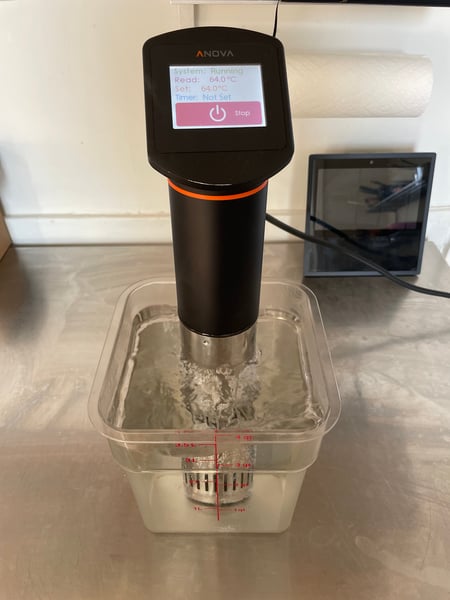

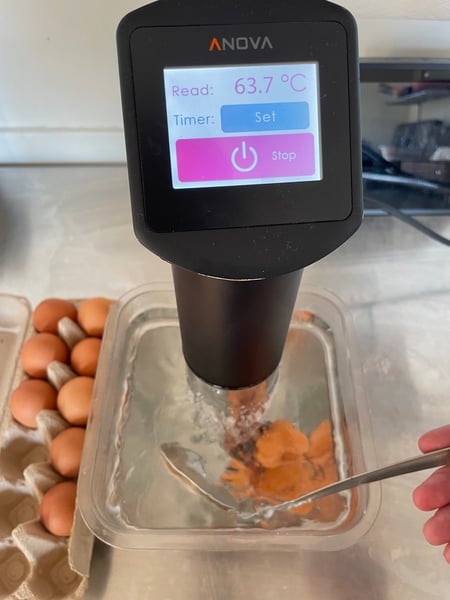
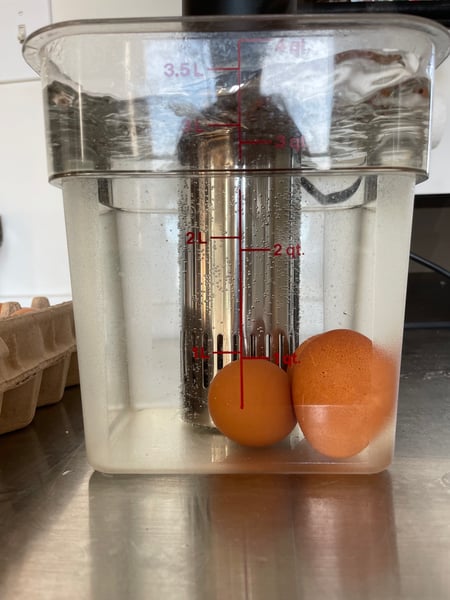
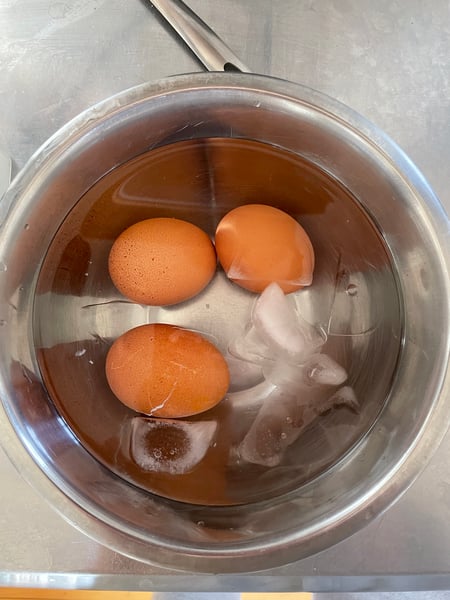 To bag the steak while the eggs are cooking, get a Ziploc brand freezer bag that fits your cold steak comfortably. Add a bit of neutral cooking oil. This will take up any extra space in the bag and make for a much better seal for even heating and air exclusion. Add your steak to the bag and seal up most of the way, keeping your finger in the seal at one end of the bag so air can still escape. Lower the bag into a container filled with water in which you can easily submerge your freezer bag, starting from the corner opposite the one your finger is holding open. At the moment just before the open section of the bag is about go underwater, remove your finger and seal the bag. You should now have a fairly well “vacuum” sealed bag with any excess space being taken up by the cooking oil.
To bag the steak while the eggs are cooking, get a Ziploc brand freezer bag that fits your cold steak comfortably. Add a bit of neutral cooking oil. This will take up any extra space in the bag and make for a much better seal for even heating and air exclusion. Add your steak to the bag and seal up most of the way, keeping your finger in the seal at one end of the bag so air can still escape. Lower the bag into a container filled with water in which you can easily submerge your freezer bag, starting from the corner opposite the one your finger is holding open. At the moment just before the open section of the bag is about go underwater, remove your finger and seal the bag. You should now have a fairly well “vacuum” sealed bag with any excess space being taken up by the cooking oil.
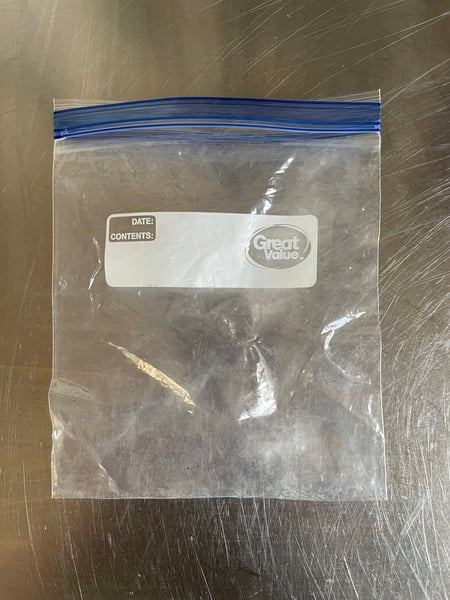
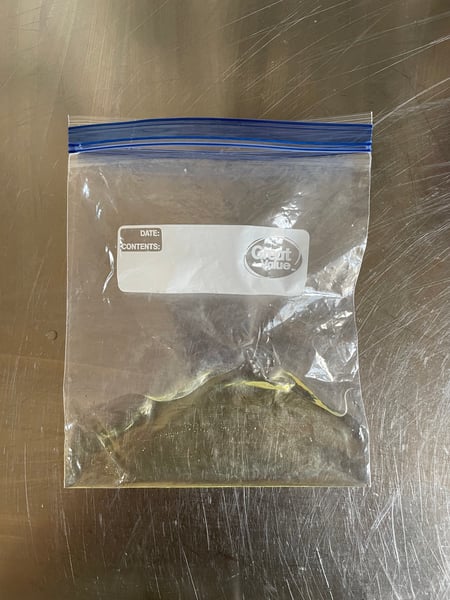
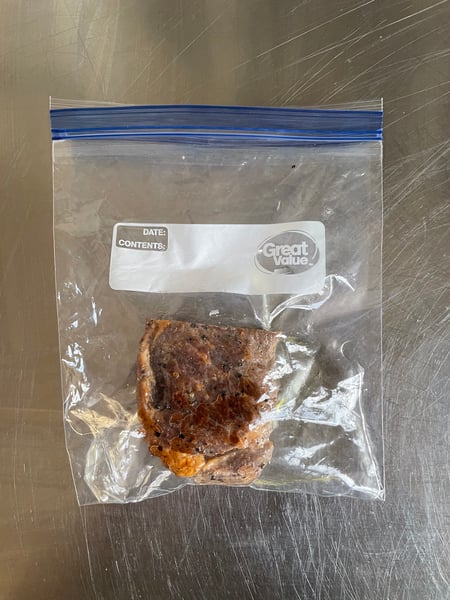
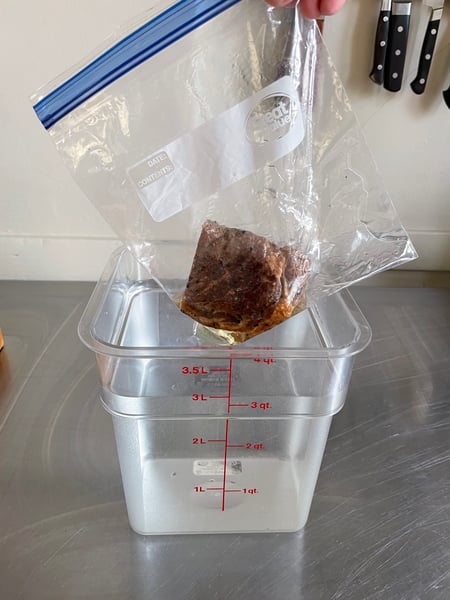
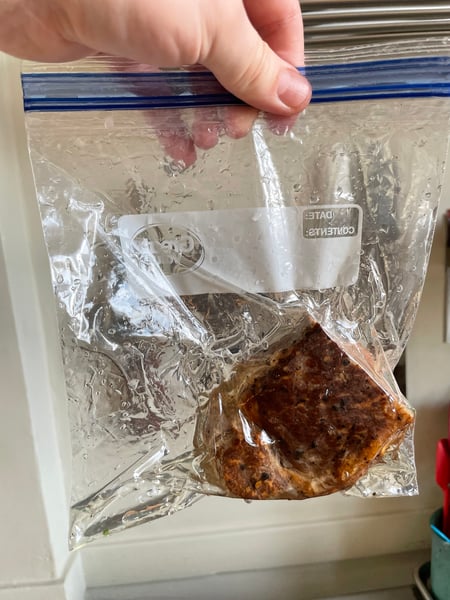
Now that the eggs are out we can turn the circulator temp down to whatever the original doneness of your steak was. In this case medium rare, or 127 ºF / 53 ºC. You could wait for the temp to fall naturally, or you could add some cold water or an ice cube or two to the bath to cool it down quickly. Or you could do what I did, and just add the steak to the bath before it cools down. This will allow the steak to re-heat a little faster, but will sacrifice a little bit of the pink color. However, all of the juiciness and texture of the medium rare doneness remain intact. Let it heat in the water bath for 30 minutes as the temperature falls from the egg setting, and for the last 5 minutes of the cook time preheat a well-seasoned cast iron skillet or whatever pan you use for searing over low heat. While the steak cooks, you can check the eggs to make sure their texture aligns with that described above.
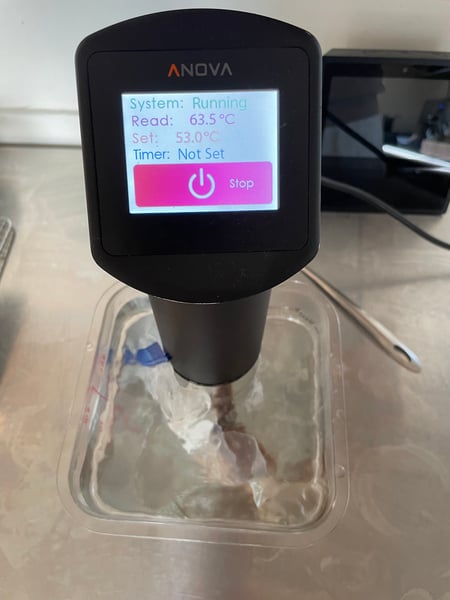
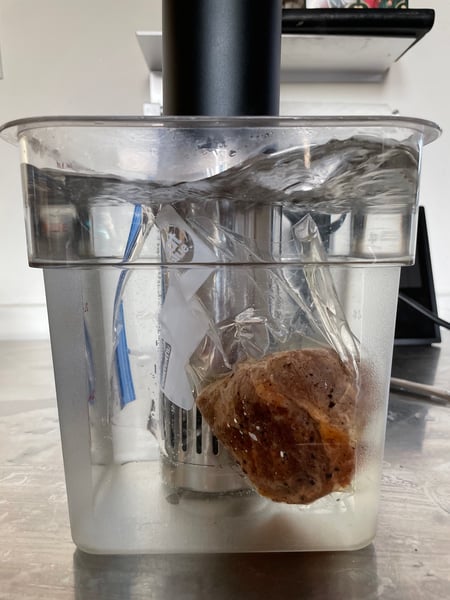
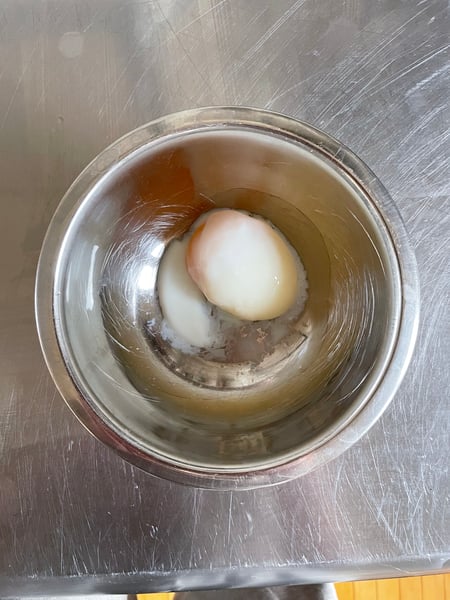
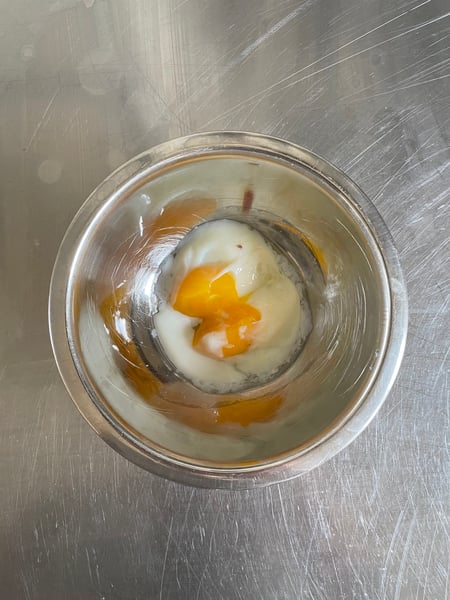
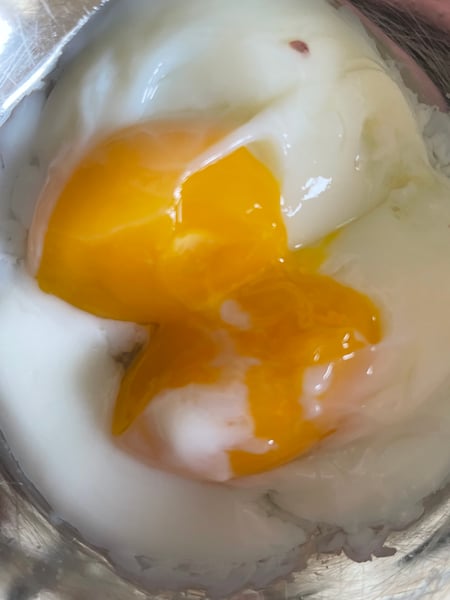
When the steak is done, the temp will have fallen down to the set temperature and the steak can go straight from the bag into the pre-heated skillet. No need to oil the skillet beforehand because the steak will have enough oil clinging to it from the bag to sear nicely. Allow the steak to sear on the first side for just about a minute, then flip over and crack one of the sous vide eggs into the pan where the steak was before. Season the egg with a pinch of salt, and if you like a couple grinds of pepper, and maybe if you’re into flavor, a little sprinkle of MSG. Then flip the egg to set the remaining loose white. Remove the steak from the pan, slice, and plate with the egg. Serve with steak sauce, hot sauce, salsa verde, chimichurri, or your favorite condiment.
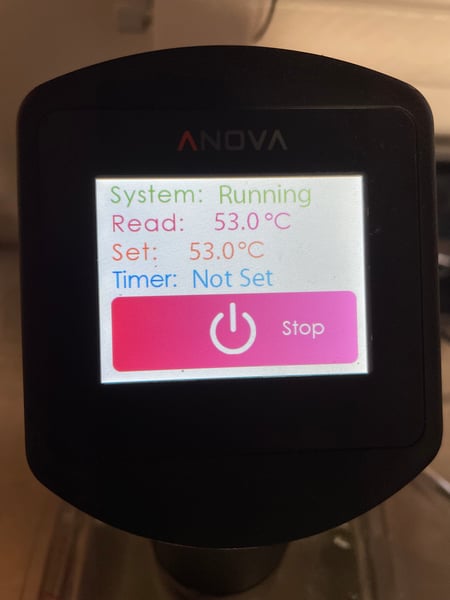
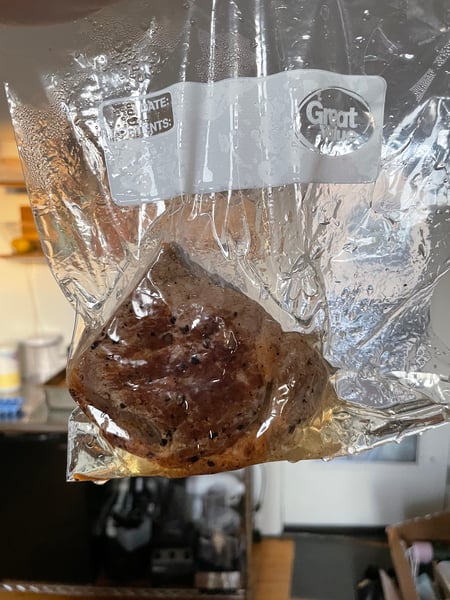
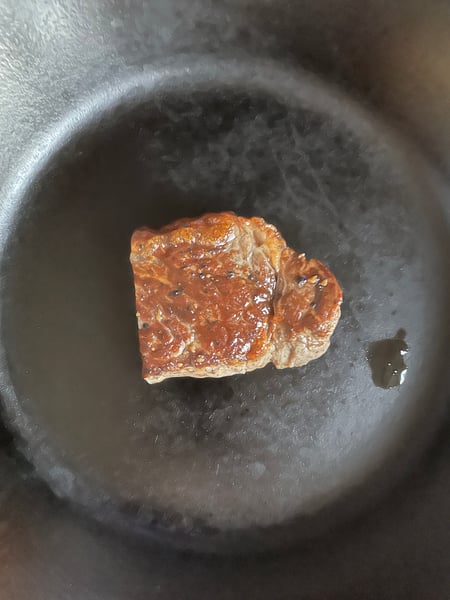
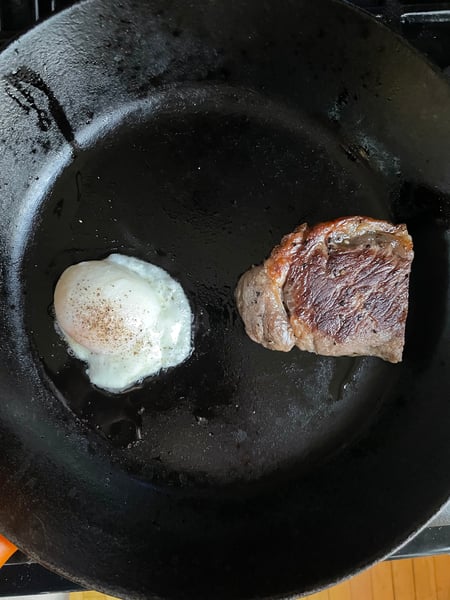
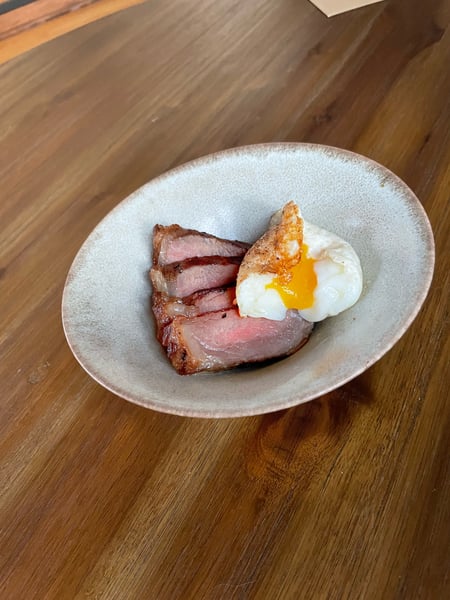
This method of reheating steak is both basically foolproof, and one of the only methods that can 100% prevent any overcooking of your steak as it re-heats. Like the unique texture of the egg, this power comes from the precision and accuracy of the temperature control afforded by the immersion circulator. This precision and fool proofing is a hallmark of the thinking that lead the modernist cooking movement.
If you’re interested in learning more about some of the most iconic modernist cooking techniques, including a more in depth discussion of sous vide cooking, you should check out our upcoming Modernist Boot Camp near the end of March. Hope to see you there!
*It should be noted that the term sous vide is French for “under-vacuum” and technically refers to the technique of vacuum sealing the food to be cooked in plastic bags in a chamber vacuum sealer. For the sake of legibility, this post has taken the now-common meaning of the term which refers simply to the act of cooking food in a temperature controlled liquid (usually water) bath, (usually) controlled by an immersion circulator.

